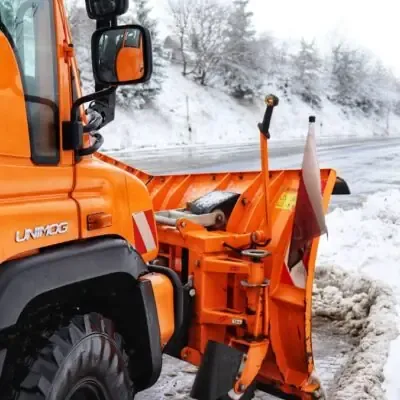How Does Ratchet Strap Work: Guide to Understanding Its Mechanics
Ever found yourself wondering how a simple mechanism like a ratchet strap can secure heavy loads with such ease? It’s not magic, it’s physics. Ratchet straps, also known as tie-down straps, are essential tools used in the transportation of goods. They’re designed to hold cargo in place during transit and prevent any damage that might occur due to movement.
At its core, a ratchet strap consists of two main components: the ratcheting mechanism and the webbing or strap itself. The ratcheting buckle is where all the magic happens – it’s what allows you to tighten and lock the strap securely around your load. Thanks to their robust construction and straightforward operation, you’ll find them used everywhere from personal pickup trucks to heavy-duty commercial transport vehicles.
Understanding how a ratchet strap works involves delving into the mechanics of the ratcheting system. When you pull on one end of the strap, it winds around a small drum within the buckle. Each time you crank the handle up and down, the drum rotates, pulling more of the strap onto it and effectively tightening its grip around your cargo. This process continues until there’s enough tension in the webbing to keep your items securely in place.
Understanding the Basics of a Ratchet Strap
Have you ever wondered how that ratchet strap in your garage works? You’re not alone. Let’s delve right into the basic mechanics of these handy tools.
A ratchet strap, also known as a tie-down strap or cargo strap, is utilized to secure loads during transit. They’re vital equipment for everything from moving furniture to keeping goods steady on large trucks. It’s all about pressure and tension – you pull it tight, and it stays put.
Ratchet straps are made up of two main components: the actual strap and the ratcheting assembly itself. The latter is where magic happens. This mechanism includes a handle and gear that work together to tighten or loosen the strap based on your needs.
The process doesn’t end there. You’ve got to thread one end of the belt through what we call the mandrel, which is located at the bottom of the ratcheting assembly. When you start pushing and pulling on that handle, this causes rotation in one direction only due to a tiny but crucial piece called pawl.
The pawl locks into place with each upward swing of your hand, preventing backward movement hence enabling continuous tightening without slippage when you release your grip on every downstroke – pure mechanical genius!
But maybe you are wondering how do I release it once I’m done? Well, there’s usually a lever somewhere near that handle which disengages our friend ‘the pawl’, allowing for smooth loosening when required.
● Components:
○ Strap
○ Ratcheting Assembly
○ Mandrel
○ Pawl
Remember next time when using this tool – whether transporting grandma’s antique chest or securing heavy cargo, understanding its working principle will help ensure proper usage while maximizing safety!
Components Making Up a Ratchet Strap
Delving deeper into the world of ratchet straps, it’s essential to understand their components. A typical ratchet strap consists of three main parts: the webbing, ratchet handle and end fittings.
Let’s start with the webbing. This is the long, flat material made from high-strength polyester fibers. It’s designed to withstand heavy loads without tearing or fraying. Lengths may vary from 6 feet up to 30 feet or even longer, depending on your needs.
Next up is the ratchet handle. This pivotal piece serves as the heart of any ratchet strap system. It features a simple yet ingenious mechanism that allows you to tighten and secure your load quickly and efficiently. The handle itself often has an ergonomic design for easy gripping and safe use.
Finally, we have end fittings, also known as hooks or clips – these are attached at either end of the webbing. These attachments can be in various forms such as S-hooks, double J-hooks or flat hooks among others depending on what they’re anchoring onto.
Here’s a quick breakdown:
Component Description
Webbing High-strength polyester fibers; varies in length
Ratchet Handle Mechanism allows for tightening; ergonomic design
End Fittings (hooks/clips) Attached at ends of webbing; various designs
Understanding these elements empowers you with knowledge about how ratchet straps work and what makes them so effective for securing loads during transportation or storage scenarios.
Remember! While they may appear deceptively simple, each component plays a vital role in assuring safety when dealing with hefty weights—whether you’re moving furniture across town or transporting construction materials across country.
The Science Behind How a Ratchet Strap Works
Delving into the mechanics of a ratchet strap, you’d find it’s quite an ingenious device. It’s based on simple principles of physics and mechanical advantage. At its core, a ratchet strap operates using the principle of friction and gear engagement.
The main elements in your typical ratchet strap are the handle, the latch, and two spools or gears. You’ll notice that one spool has teeth while the other is smooth. When you pull on the loose end of the strap, these teeth engage with those on the latch, allowing for movement in one direction but not back the other way.
As you continue to pull, tension increases between these two points thanks to our good friend friction. This process allows for secure fastening as well as easy release when needed – all at your control!
Think about how you’re able to lift heavy weights using pulleys or levers – these tools give us an edge over what we could achieve through brute force alone by leveraging mechanical advantage. Similarly, a ratchet strap amplifies your pulling force; transforming it into significant holding power!
So how does this work exactly? The trick lies in how each toothed wheel interacts with its partner during tightening and loosening phases:
- During tightening: Each time you move the handle up and down while pulling on the loose end of your strap, it draws more material around that smooth spool. And thanks to those handy teeth preventing backward movement (remember them?), all that tension stays locked in place.
- During loosening: Here’s where things get cool! To release tension, simply lift up your latch (the part interacting with those toothy gears). This disengages from our gear teeth – giving freedom for everything to unwind smoothly under control.
There’s no magic here folks – just smart design applying basic scientific principles!
Step-by-Step Guide: Using a Ratchet Strap Safely
Diving right into it, let’s tackle the practical side of ratchet straps. You’re about to learn the step-by-step method for using these handy tools safely and effectively.
First off, you’ll want to ensure your strap isn’t twisted or tangled. Sounds simple enough? Well, you’d be surprised how often this basic step is overlooked! A twisted strap isn’t just a nuisance; it can seriously compromise the integrity of your load.
Now onto threading the strap. Feed it through the mandrel—that’s the circular part of the ratchet mechanism—making sure it’s aligned correctly. Pull any excess strap through until your load is snug against the hook end.
Next up, time to crank that handle! Yep, this is where we see some real action. Raise and lower it until your strap tightens around your cargo. Be careful not to overdo it though—you don’t want to damage what you’re securing!
Once everything’s nice and taut, lock that ratchet in place by closing its handle completely. Bingo – secure cargo!
Let’s not forget removal when you’ve reached your destination – another crucial step in using a ratchet strap safely. Simply pull and hold the release tab while opening the ratchet handle fully flat – voila, tension released!
Remember:
- Always check for twists or knots before use.
- Don’t overtighten – better safe than sorry!
- Never forget proper disassembly – safety first after all.
We hope this guide helps demystify those seemingly complex ratcheting mechanisms — here’s to secure hauling on all future endeavors!
Common Mistakes to Avoid When Using Ratchet Straps
Ratchet straps are a godsend, aren’t they? They make securing loads a breeze, whether you’re transporting furniture or strapping down equipment. But hold on! While they’re undeniably handy, there’s also room for error when using these tools. Let’s delve into some common mistakes that people often make with ratchet straps and how you can avoid them.
First off, an all-too-common mistake is not selecting the right strap for your load. All ratchet straps aren’t created equal – their strength varies based on the material and width of the strap. Folks tend to underestimate this aspect which can lead to accidents. So always ensure to choose a strap that is strong enough to handle your specific load.
- Light-duty: 500 lbs – 1,500 lbs
- Medium-duty: 1,500 lbs – 10,000 lbs
- Heavy-duty: Over 10,000 lbs
Next up is improper threading of the strap through the ratchet. You’d be surprised how often this happens! A poorly threaded ratchet will not hold tension well and may slip or come undone altogether during transport. Always take time to learn and practice proper threading technique – it’ll pay off in terms of safety.
Over-tightening is another issue worth noting. If you tighten your straps too much, it could damage both the strap itself and whatever you’re securing with it. On the flip side, under-tightening your straps isn’t ideal either as loose straps might fail to secure your load properly!
Finally yet importantly – neglecting regular inspections of your ratchets and straps could spell disaster too! These tools undergo considerable stress during use; hence they can wear out over time or even break suddenly if mishandled consistently.
The bottom line here? Keep these pitfalls in mind next time when you’re using ratchet straps. With the right knowledge and precautions, you’ll be a pro at securing loads in no time. Remember safety is paramount!
Maintaining Your Ratchet Straps for Optimal Performance
You know those trusty ratchet straps that never fail you? They’re not invincible. To keep them working at their best, it’s crucial to maintain them properly. Let’s dive into how you can optimize your ratchet straps’ performance through regular maintenance and care.
Proper storage is the first step towards maintaining your ratchet straps. It’s as simple as keeping them in a dry environment away from direct sunlight. This prevents the strap material from deteriorating due to moisture or UV damage. Ideally, hang them up instead of leaving them lying around on the floor where they could be stepped on or run over.
Cleaning your ratchet straps isn’t rocket science but it’s just as important as proper storage. If they get dirty during use, make sure to clean them before storing away. A soft brush with mild soap and water does the trick most of the time, ensuring any dirt or grit won’t wear down the fibers over time.
Inspection is another key aspect of maintenance that should become second nature to you if it hasn’t already! Before every use, give your straps a quick once-over for signs of wear and tear such as fraying, cuts or weakened tension in the ratcheting mechanism. This could mean it’s high time for a replacement strap.
Lastly, do remember that even well-maintained ratchet straps have an expiration date! Typically after about two years (depending on usage) start thinking about replacing them regardless of their visible condition – better safe than sorry!
There you have it – some simple yet essential steps to ensure your ratchet straps are always ready for action when needed most!
Frequently Asked Questions About Ratchet Straps
You might be thinking, “What exactly is a ratchet strap?” Well, it’s a type of tie-down device that’s often used to secure cargo during transportation. The mechanism itself is pretty straightforward – you’ve got a strap and a ratchet buckle. When the strap is threaded through the buckle and tightened, it locks into place thanks to the lever-action of the ratchet.
Let’s address some common questions:
“Can I use ratchet straps for any kind of load?” Generally speaking, yes–ratchet straps are incredibly versatile. They’re commonly used in everything from shipping logistics to recreational activities like camping or moving furniture. But remember: each strap has its own weight limit. Don’t exceed this limit or you risk damaging the strap and whatever you’re trying to secure.
“How do I release a ratchet strap?” It’s easier than you might think! Simply pull and hold the release handle on the top of the ratchet assembly while simultaneously pulling the fixed end of the strap out of slot in center spool.
“What if my ratchet strap gets stuck?” Don’t panic! Sometimes dust, dirt, or rust can jam up your gear mechanism. A quick cleaning with warm soapy water usually does the trick. Just make sure it’s fully dry before using again.
In case you’re wondering “How long do these straps last?”, that largely depends on how well they’re cared for. Kept clean and properly stored when not in use, good quality straps can last several years easily.
Finally, “Are these safe to use?” Absolutely – as long as they’re used correctly! Always check your equipment before use for signs of wear or damage and never overload them beyond their rated capacity.
Now that we’ve covered some basics about ratchet straps, hopefully using them seems less daunting!
Concluding Thoughts on How a Ratchet Strap Works
Now that you’ve taken this journey through the inner workings of a ratchet strap, it’s clear just how ingenious this simple tool really is. Its design and functionality blend together to provide an effective solution for securing loads during transportation.
You’ve learned that at its core, a ratchet strap operates using a simple yet effective mechanism. The force applied pulls the webbing strap through the ratchet, which then locks securely in place thanks to the latch mechanism. It’s this clever design that ensures your cargo stays put, no matter what.
To leverage its full potential, remember these key points:
- Always inspect your ratchet straps before use.
- Make sure they’re properly secured and tightened.
- Regular maintenance can prolong their life.
Despite its simplicity, never underestimate the power of a well-designed tool like the ratchet strap. With proper usage and care, it’ll serve you reliably for years to come.
It’s also important to note that while we’ve simplified explanations here for clarity, actual mechanisms can vary slightly across different models or brands. So always refer back to your specific product manual if you’re unsure about something.
In closing out our discussion on how a ratchet strap works, remember: understanding your tools makes you more efficient and safer in whatever task lies ahead. Here’s hoping this deep dive into one of those everyday items helps you appreciate them even more!
GRland – Μην μαθαίνεις τα νέα τελευταίος!
Κάνε Like στη σελίδα μας στο Facebook και ενημερώσου πρώτος για όλες τις τελευταίες εξελίξεις. Έγκαιρη, έγκυρη και ανεξάρτητη ενημέρωση. Όλες οι τελευταίες Ειδήσεις από τη Γερμανία, την Ελλάδα και τον κόσμο, τη στιγμή που συμβαίνουν.








